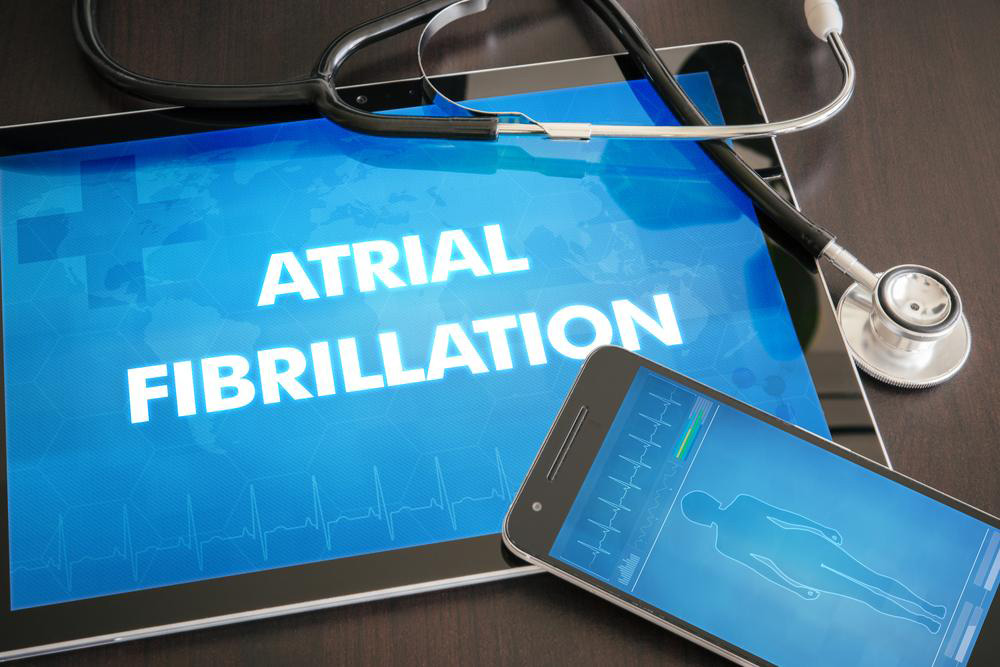Comprehensive Guide to Atrial Fibrillation: Recognizing Symptoms, Causes, and Effective Management Strategies
Atrial fibrillation (AFib) is a prevalent heart rhythm disorder characterized by irregular heartbeat, which can lead to strokes and heart failure. This comprehensive guide explores symptoms, causes, risk factors, and management strategies. Recognizing early signs such as palpitations, fatigue, and shortness of breath is essential for timely intervention. The article emphasizes the importance of diagnosis through ECG, discusses treatment options like medications, cardioversion, and lifestyle modifications, and highlights recent advances in AFib care. Preventing complications and maintaining heart health are crucial for long-term well-being. Learn more about how to identify and manage AFib effectively.

Comprehensive Guide to Atrial Fibrillation: Recognizing Symptoms, Causes, and Effective Management Strategies
Atrial Fibrillation (AFib) is a common cardiac arrhythmia characterized by irregular and often rapid heartbeat rhythms resulting from abnormal electrical activity within the atria, the upper chambers of the heart. This condition can significantly impact an individual's quality of life and carries the risk of serious complications such as stroke, heart failure, and other cardiovascular issues. Understanding the intricacies of AFib—including its symptoms, underlying causes, and available management strategies—is vital for early detection and effective treatment.
**What is Atrial Fibrillation?**
AFib occurs when the electrical signals in the heart become disorganized, causing the atria to quiver or fibrillate rather than contract effectively. This chaotic electrical activity results in an irregular and often rapid heartbeat, which can be felt as palpitations or irregular pulse rhythms. The condition may be episodic (paroxysmal), persistent, or permanent, depending on its duration and response to treatment.
**Symptoms of AFib**
Detecting AFib can be challenging because symptoms vary among individuals. Some individuals remain asymptomatic, while others experience noticeable symptoms that interfere with daily activities. Common signs and symptoms include:
Palpitations: A sensation of rapid, pounding, or irregular heartbeat.
Fatigue: Persistent tiredness due to inefficient heart function.
Shortness of Breath: Difficulty breathing, especially during exertion or lying flat.
Chest Discomfort: Mild to severe discomfort or a feeling of tightness.
Dizziness or Light-headedness: Due to reduced blood flow to the brain.
Reduced Exercise Tolerance: Difficulty performing physical activities due to fatigue or breathlessness.
Fainting: In severe cases, insufficient blood circulation can cause fainting episodes.
Recognizing these symptoms promptly and seeking medical evaluation is crucial for managing AFib effectively and preventing potentially severe complications such as stroke.
**Causes and Risk Factors of Atrial Fibrillation**
AFib can stem from various underlying conditions and lifestyle factors. The most common causes include:
High Blood Pressure (Hypertension): Elevated pressure strains the heart chambers and disrupts electrical pathways.
Coronary Artery Disease: Blockages reduce blood flow to the heart muscle, impairing electrical stability.
Heart Valve Disorders: Malfunctioning valves can cause atrial dilation, precipitating AFib.
Heart Failure: Reduced pumping efficiency leads to atrial enlargement and electrical disorganization.
Hyperthyroidism: Overactive thyroid gland increases heart rate and electrical irregularities.
Pulmonary Diseases: Lung conditions like COPD can influence heart rhythm and function.
Alcohol Use and Substance Abuse: Excessive alcohol consumption, especially binge drinking, can trigger AFib episodes.
Lifestyle Choices: Poor diet, obesity, smoking, and sedentary lifestyle increase risk.
Age is another significant factor, with the prevalence of AFib rising markedly among the elderly due to structural changes in the heart tissue. Additionally, genetic predisposition may play a role, especially in individuals with a family history of atrial fibrillation.
**Complications Associated with Atrial Fibrillation**
Sometimes labeled as a silent threat, AFib's most severe complication is stroke. Because the chaotic electrical signals cause blood to pool in the atria, blood clots can form and potentially travel to the brain, causing ischemic strokes. Therefore, anticoagulation therapy is often employed to prevent clot formation.
Other complications include:
Heart Failure: Chronic AFib can weaken the heart muscle further, leading to congestive heart failure.
Reduced Quality of Life: Recurrent symptoms and medication side effects impact daily living and mental health.
An increased risk of other arrhythmias and cardiac conditions with prolonged untreated AFib.
**Diagnosis of Atrial Fibrillation**
Medical evaluation begins with a detailed history and physical exam. The cornerstone of diagnosis is the electrocardiogram (ECG or EKG), which captures the electrical activity of the heart, revealing characteristic irregularities such as absent P waves and irregular RR intervals. In some cases, continuous rhythm monitoring via Holter monitors, event recorders, or implantable loop recorders may be necessary to document paroxysmal episodes.
Additional tests may include echocardiography to evaluate heart structure and function, blood tests to identify underlying conditions like hyperthyroidism or electrolyte imbalances, and stress tests to assess heart response under exertion.
**Management and Treatment Strategies for AFib**
Proper management involves a comprehensive approach tailored to the individual's symptoms, risk profile, and underlying causes:
Medications: Antiarrhythmic drugs aim to restore normal rhythm, while rate control medications like beta-blockers or calcium channel blockers regulate heart rate. Anticoagulants such as warfarin or newer oral agents (NOACs) reduce stroke risk.
Electrical Cardioversion: A procedure that delivers a controlled electric shock to restore normal rhythm, especially effective in recent-onset AFib.
Catheter Ablation: A minimally invasive procedure wherein targeted energy destroys abnormal electrical pathways in the heart.
Lifestyle Modifications: Addressing risk factors through weight management, cholesterol control, smoking cessation, limiting alcohol intake, and engaging in regular physical activity can significantly reduce AFib episodes and improve overall cardiovascular health.
Monitoring and Follow-up: Regular check-ups, blood pressure control, and adherence to medication schedules are critical for preventing recurrence and complications.
**Prevention and Long-term Management**
Preventive measures focus on controlling risk factors. Maintaining a healthy blood pressure, managing blood sugar, avoiding excessive alcohol and caffeine, and incorporating heart-healthy diet and exercise routines all contribute to reducing AFib incidence. Patients diagnosed with AFib should work closely with their healthcare provider to develop a personalized management plan that emphasizes stroke prevention and minimizing symptom burden.
**Emerging Therapies and Future Directions**
Research continues to advance, with developments such as improved ablation techniques, novel anticoagulants with fewer side effects, and personalized medicine approaches. Innovations in wearable technology also promise better detection and management of AFib outside clinical settings, leading to earlier interventions and improved outcomes.
In conclusion, atrial fibrillation is a complex condition with significant health implications. Early recognition of symptoms, understanding of causes, and adherence to effective treatment strategies can dramatically enhance patient quality of life and reduce serious complications. If you experience symptoms consistent with AFib or have risk factors, consult a healthcare professional promptly for proper assessment and care.





